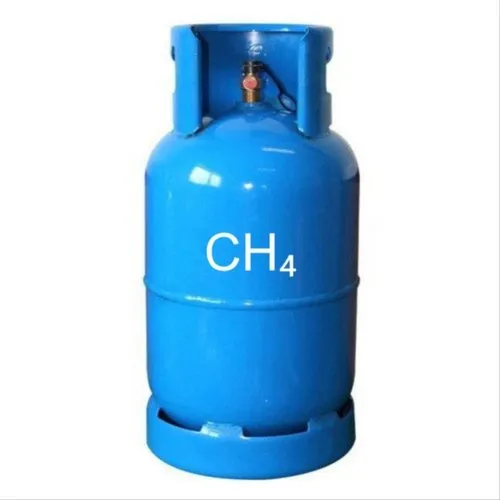Methane Gasses
| METHANE | Total purity by volume(%) | Maximum levels of impurities (ppm by volume) | |||||||
| Grade | O 2 | H2O | Ar | H2 | CO | CO2 | THC | N oxides | |
| Special | 99.99 | 1.0 | 1.0 | 2.0 | NIL | NIL | NIL | 0.5 | NIL |
| Grade-I | 99.98 | v2.0 | 2.0 | 3.0 | NIL | NIL | NIL | 1.0 | NIL |
| Grade-II | 99.95 | 4.0 | 4.0 | 5.0 | 1.0 | 0.5 | 0.5 | 1.0 | 0.5 |
Technical Specifications
| Color | Colorless, Odorless Gas |
| Chemical Name | CH4 |
| Molecular Weight | 16.04 g/mol |
| Boiling Point | -161.5°C (-258.7°F) |
| Melting Point | -182.5°C (-296.5°F) |
| Density | 0.656 kg/m 3 (at 0°C) |
| Flash Point | Non-flammable in pure state |
| Autoignition Temperature | 537°C (999°F) |
| Flammability Limits | 5% to 15% by volume in air |
| Storage Pressure | Stored as a compressed gas or liquefied under pressure |
Application Uses
- Fuel for Power Generation: Methane is widely used in power plants and natural gas stations for generating electricity due to its high energy content.
- Industrial Fuel: Methane serves as an important fuel for industrial heating processes and as a feedstock in the production of chemicals like hydrogen.
- Natural Gas: Methane is the primary component of natural gas, used extensively for residential and commercial heating and cooking.
- Renewable Energy: Methane from organic waste (biogas) is increasingly used as a renewable energy source, reducing greenhouse gas emissions.
- Synthesis of Chemicals: Methane is used in the chemical industry to synthesize products such as methanol, formaldehyde, and acetic acid.

